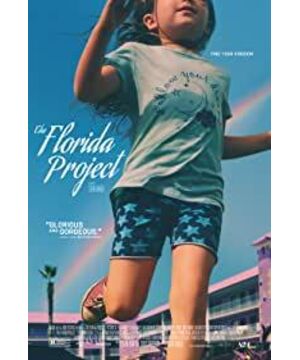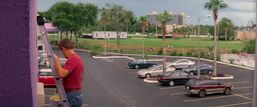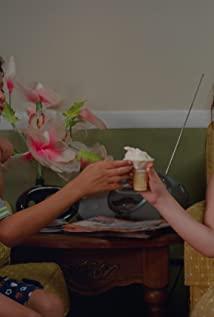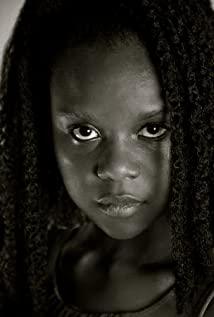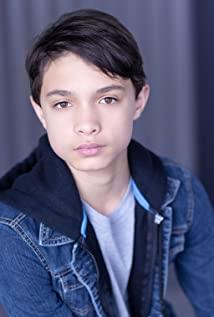Text|Tanglu published in the public account MOViE Mu Wei
Florida, when I saw this name, my first reaction was the hip-hop singer Flo Rida (Flo Rida) I heard in junior high school. His original name was Tramar Lacel Dillard and his stage name was his own His hometown is called Florida.
Why mention this?
Because it is indeed Florida (United States), it is wrapped in hip-hop and dream-making jelly. Hip-hop culture is ubiquitous in movies that reflect the United States, running through the car of "American Sweetheart" and twisting in the pace of the children in "Florida Paradise". However, hip-hop developed into the future, but named it sincerely and falsely.
The black people in the slums became famous and became extravagant. (Or self-imposed in the lyrics) The lyrics headed by nigga (slang black people) such as Flo Rida and Rick Ross are mostly "Little mama, Collar on my Polo, kisses on my necklace, All my diamonds watching, now my watches getting jealous."
These saliva songs are actually rooted in the huge dreamland of the United States.
Most of today's hip-hop fashion reveals a strong sense of luxury in life. The life of drugs, sports cars, golden chains, and cool representations is worth showing off. Hip-hop is no longer the outlet that truly reflects the fighting spirit of gangsters in the 2pac era. The hip-hop of saliva songs is popular, and dreams are drunk.
The United States is making dreams everywhere. The current saliva hip-hop, Hollywood DreamWorks, and cultural bubbles abound.
Under this window, how are the children of "Florida Paradise" so fascinated?
The little girl is in the room with hip-hops and traps given to them by the young mother Hailey, and playing in the grass. The little girl Molly imitates the hip-hops of the European and American stars. The young mother Hailey is proud to put them in In this culture.
The excessive cool bandit culture has woven a dream net for the children (including the young mother Haili), even if the material economy is scarce, they can find their own place in the corresponding cultural environment.
It is precisely because of this environment that the immaturity of the mother Hailey did not bring real happiness to the children.
Hai Li’s image is neither a Japanese-style single mother (completely ignored, such as "Nobody Knows", "Life is Close"), nor is it a typical American chicken soup ("When Happiness Comes Knock on the Door" struggling to rise success case).
Hailey has to take care of the children while also keeping the part of her life that she should have, because she is young and energetic. This feeling is just like the current hip-hop culture that only leaves behind the gangsters, but lacks the spirit of rising. The mother just barely made a living with disdain, not a serious life with a purposeful plan. And this immaturity has brought many troubles and adverse effects to children. Lack of basic literacy education, when the child disturbs the order, the mother also responds to outsiders with a disdainful attitude, and all the domineering and tricky behaviors subtly influence the child's behavior. But those who don't know are fearless, and the children's feelings about the world around them are still happy (temporary).
This kind of happiness is meticulously compiled in a dreamy town.
The walls painted in purple, yellow, red, and green, motels, orange sodas and other scenes that look like "dream bubbles" are undoubtedly one of the highlights of the film. The most unique is the dreamy realism handled by director Sean Baker.
Although the scene in "Florida Paradise" looks dreamy, the architectural paintings and costumes are also selected with the scene colors, but it also naturalizes it in other aspects.
This is different from the way of processing feature films based on the color of the picture. For example, in Wes Anderson's movies, the combination of color and art is the most significant, and Wes Anderson is to construct a complete ups and downs story with a clear narrative line , With the fantasy color picture form, a complete feature film is presented before us.
In this film by Sean Baker, the director has weakened its storyline, presenting small fragments of life in fragments.
The point is to use a delicate life to let the audience perceive the living conditions of a small town in Orlando, Florida, and present the real environment from the very delicate environmental sounds, the natural state of the characters, and the lengthy pace of life.
In a long shot of the rocker following sweeping, the children ran in the dreamy purple building corridor. From afar, there were laughter, running footsteps, and the roar of airplanes passing through the sky. The noisy sounds of other environments in the park are all integrated into the film.
Realistic sound reproduction, hand-held shaking lenses, and everyday editing are all characteristics of life-streaming movies/realism. In realist movies, we see the hand-held shaking models of the Darnet brothers and Lou Ye, and the images that accompany this photography technique are gray and dark. The verbosity, cruelty, and depression of life are revealed by the gray-toned reality. In life-streaming movies, the tone of the picture is more in line with the daily situation.
In "Florida Paradise", its scenes are dreamy and colorful, but the filming is done in a realistic way. This method of treatment cleverly embellished the childlike dreams jumping in the multicolored glass jars, presenting the contrast and unity of dreaminess and reality.
The film script was set and filmed in Kissimmee, Orlando, Florida. This place is famous for its Disneyland and water theme parks. In reality, it has been artificially turned into a dream venue. This also corresponds to the event setting of the Brazilian tourists coming to this motel in the film. The intrusion of outsiders seemed to break the self-made sense of dreams of the people in the community. They complained that Brazilian women kept lying about the backward facilities here, and opened a mouth to Dreamy Net as an intervention.
The painting of buildings has also been restored to possible real scenes. In a country where dreams are made, what is the painting of buildings in the tourism industry?
The theme of Orlando’s Dennis Land and Harry Potter Park is exactly the landscape in reality. On this basis, the director can create this kind of "dream sense" by framing the scene and designing a little, because this kind of "dream "Sense" has already penetrated in real life.
Dream and reality blend together, and the constant intervention of reality breaks the pink and purple children's paradise. In the motel community shown in the film, adults deceive themselves and pretend to be affluent people on vacation in a naked way; children burn houses under the indulgence of adults, while mothers are surprised by the fire. Useless houses, "let it burn"; even in the face of a dying business, the old pedophile sneaks into the town and threatens the dream place, the administrators continue to reluctantly maintain the business.
Children continue their carefree lives in the dreams woven by all kinds of adults. It wasn't until the adult (mother)'s irregular behavior intensified and the police investigated and forced to quarantine that the children realized that this was not true happiness.
At the end, they escaped from the family, found good friends, cried uncontrollably, and ran to the Disneyland they really yearned for. It is not a sensational pretense. After a long daily life, it finally ushered in an artificial emotional climax (music, running design), but at the same time it points to another place where the interweaving of dreams and reality is intensified-Disney.
What is it like to run towards what they think is the real ideal paradise? The transition from a small town to a city through editing is not only a contrast of the gaps, but also a meaningful one. If you jump out of the small town in the multicolored glass jar, isn't the real Disneyland a greater cruel utopia?
View more about The Florida Project reviews


